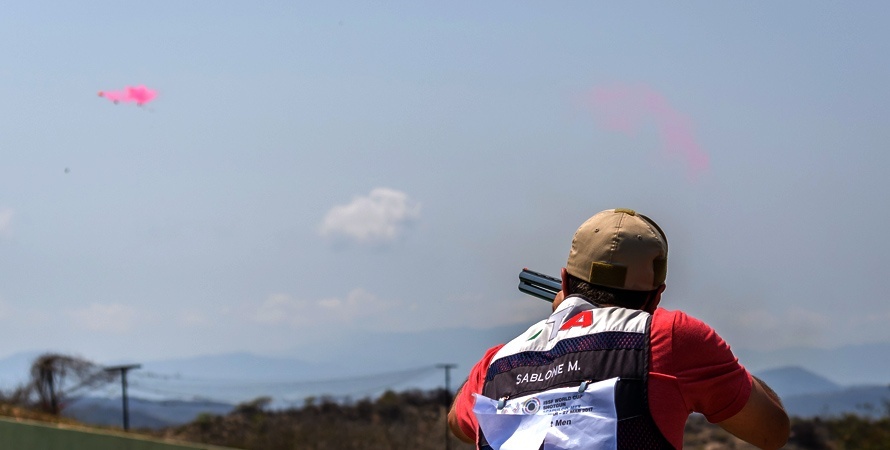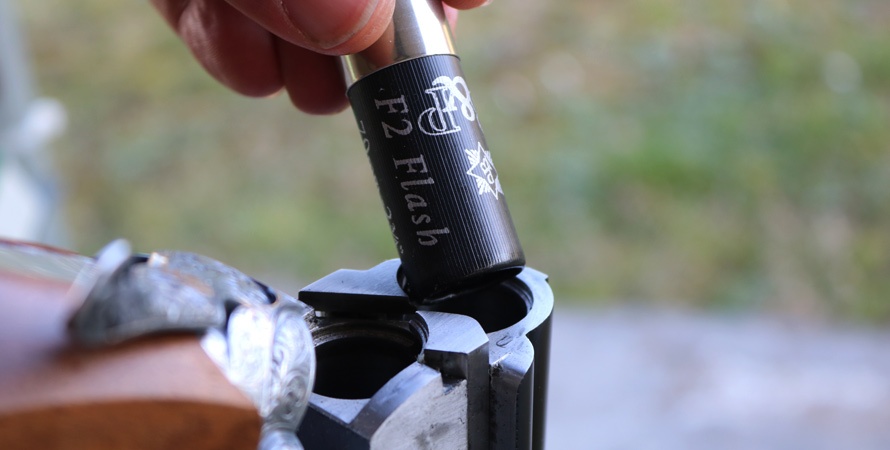How to shoot clay targets and improve your scores
So do you want to shoot and break more clay pigeons?
In this blog post we’ll give you some tips that’ll make it easier for you to target those clays, and shoot them out of the sky.
So do you want to shoot and break more clay pigeons?
In this blog post we’ll give you some tips that’ll make it easier for you to target those clays, and shoot them out of the sky.
______________
Watching other shooters, it looks easy, right? Everything seems to move in slow motion, the clay leaving the trap, the shooter tracking it with his shotgun, to finally shoot it out of the sky.
But when you step up onto the platform, everything changes. The clays seem to move much too fast, you feel clumsy when tracking them with your shotgun and you can but watch after taking a shot as they fly past still intact, first one then another.

The reason for this is that taking aim when shooting and hitting the clay not only requires the greatest concentration from the shooter, but also a perfect stance and perfectly coordinated movements, as well as knowledge of some fundamental ballistic principles.
So do you want to shoot and break more clay pigeons?
In this blog post we’ll give you some tips that’ll make it easier for you to target those clays, and shoot them out of the sky.
Seeing the lead in clay shooting
In the various types of shooting the clays are launched at a variable initial speed, but they always leave the trap quite fast. The fastest Olympic clays will be travelling at about 120 km/h, while slower Compak Sporting clays will be travelling at about 60 / 90 km/h.
Shotgun shooting shells have an initial velocity of around 390 to 430 m/s.
Both the clays and the shells lose part of their velocity due to gravity and air resistance, and to this we have to add the range you’re shooting at, which will obviously result in a delay between the moment you pull the trigger and when the shot reaches the target.
All these factors make it necessary to shoot “seeing the lead”, but what exactly does that mean?
When shooting at any moving target you’ll always have to point your shotgun “in front of” or “above or below” it, depending on the direction the target is going. This is the only way in which the shot will reach the target by compensating for the delay caused by the shooter’s reflexes and the time it takes the shot to reach the target.

If you point your shotgun directly on the clay, you’ll end up shooting behind it, where the clay was, but isn’t when the shot reaches the point you chose. You’ll miss the clay or just wing it with the outer pellets of your shot pattern.
When shooting at any moving target you’ll always have to point your shotgun “in front of” or “above or below” it, depending on the direction the target is going.
So how much lead? And how can you estimate it?
Lead can be calculated by a mathematical equation, but it’s impossible to do so in the seconds you have between seeing the target and taking the shot.
So you have to rely on experience and instinct.
After assessing the range, speed and angle of the clay in fact, the shot is taken by aiming instinctively at a point in front of the target in its flight path where you think it will be when the shot gets there.
How to see the lead when clay shooting
Shooters mostly use two techniques to see the lead. Some prefer one over the other, and vice versa. My advice is to try both and see which one gets you most clays:
- Firing by tracking the trajectory of the target, stopping the shotgun to take your shot: In this case you point the shotgun at where the clay will leave the trap. When the clay is launched, track its trajectory by following it with your body and the rib of your gun until you’ve gone past the clay. At just the right distance, stop moving your gun and take the shot.
- Firing with the shotgun moving: As above, you track the trajectory of the clay by following it with your body and the rib on your gun. In this case though you don’t stop moving the gun but rather move it faster in a fluid motion. The gun overtakes the clay in a natural way and, without stopping moving the gun as it passes your target, you take a shot without jerking the gun.
Do you want to hear some great tips from a pro shooter?
Watch this video! The Baschieri & Pellagri shooter and ISSF medalist Ray Bassil will give us precious tips to break more clays and she will tell us how to be always focused during competitions.
You need concentration and training
Clay shooting is a very physically and mentally tiring sport. Indeed you need to maintain a high level of concentration not only when the clay is launched, but also during all your movements both on and off the platform.
Once you’ve taken your station, the only thought that should go through your head is to shoot that clay. Any other thoughts or worries can make you lose your concentration.
This is why many shooters have some habits they’ll repeat in an almost obsessive way before they get on the platform, such as:
- Adjusting their earplugs or cap
- Inserting their shells in exactly the same way
- Closing their gun in exactly the same place and in exactly the same way
- Taking a small step forwards
These habits have no value in terms of technique but they do increase your level of concentration, because you do have to pay attention to them so you can’t think of anything else that could be distracting. You’ll notice the same thing in tennis when some players repeat the same movements, like a real nervous tic, before serving.

Maintaining a high level of concentration and quick reflexes takes also a notable indirect physical effort, which adds to the actual physical effort of maintaining your stance, supporting the weight of the shotgun and absorbing the recoil, shot after shot. Tips and advice from others may help you learn faster, but you’ll only really make progress thanks to your own commitment.
Many shooters, especially beginners, tend to underestimate the physical effort clay shooting requires, and as more clays are launched their concentration will start to stray because they’re physically tired.
For this reason, we recommend practicing clay shooting along with other sports that build muscular strength and stamina.
You’ll find it’s easier to stay concentrated for longer and you’ll be shooting more clays.
Keep the right stance when shooting clays
When clay pigeon shooting, you should shoot with both eyes open. This gives you a wider field of view and better depth of field. It makes it easier to follow the trajectory of the clay and see the right lead.
Furthermore, when you’ve learnt how to point your gun when clay shooting you’ll have to learn how to move your body, and especially your upper body, as one with the gun to track and lead the clays.
You might find yourself following the clay with your eyes but not your body and gun, and erroneously think you didn’t use enough lead.
Your stance will change depending on whether you’re left or right-handed. Someone who’s right-handed should have their left foot slightly forward and body leaning just slightly forwards to keep your body and gun balanced.

The shotgun should be snug into your right shoulder and your elbows should be open and slightly horizontal, rather than vertical. Your shoulders should be parallel to the ground, avoiding the classic hunter’s stance with the gun shouldered. Track the clays by turning your body without changing the position of your feet.
When aiming, it’s important for you to be able to see the rib of your shotgun. To be able to do this, the drop, in other words the angle of the barrels and rib in relation to the stock, must be perfect.
When taking your shot you should have the rib, sight and target almost perfectly aligned.
Does changing your shotgun stock work?
Many shooters are always looking for the perfect stock for their gun, and continuously have it adjusted or adapted. Having a stock that’s fitted to the shooter is essential to target clays, but this should be done following a criterion to avoid unnecessary costs.
If you’re a beginner and have just bought a new shotgun, make sure you’ve acquired a good level of repetitiveness and automation with the position of the stock before customizing it.
Shoot at least 10 series of clays before adjusting it. At first it may seem the gun doesn’t follow your movements properly, but this is normal in any case.
If you can’t go to a firing range you can practice at home by shouldering the gun, obviously without it being loaded, pointing it to the front and low and then track an imaginary target that’s moving in various directions.
If you are sure your stock needs changing, remember that you can only find the right adjustment by consulting an expert stockmaker or gunshop, who’ll have someone look at how you shoulder the gun from the end of the rib.
Source:
https://blog.hunting-spot.com/en/how-to-shoot-clay-targets


